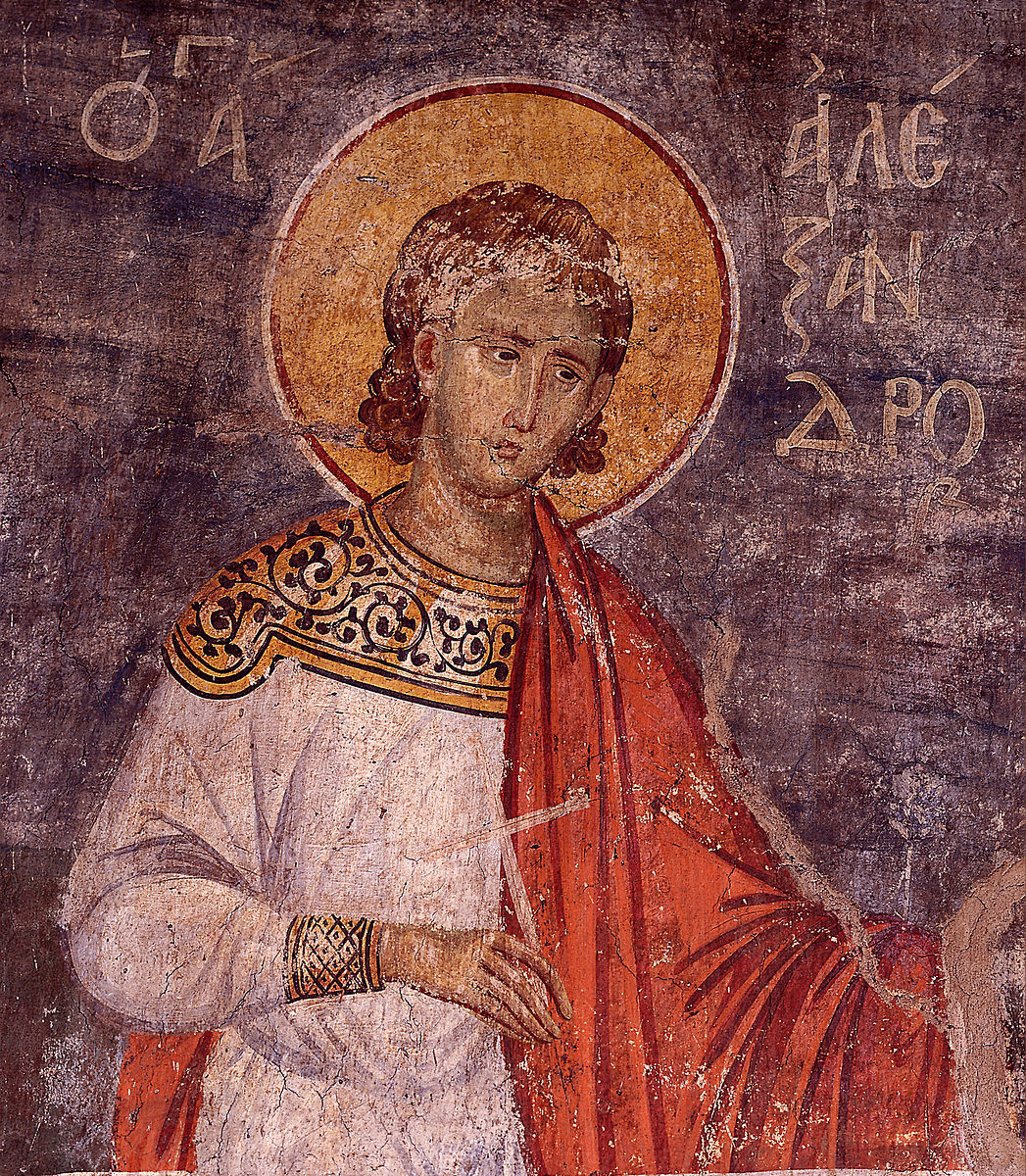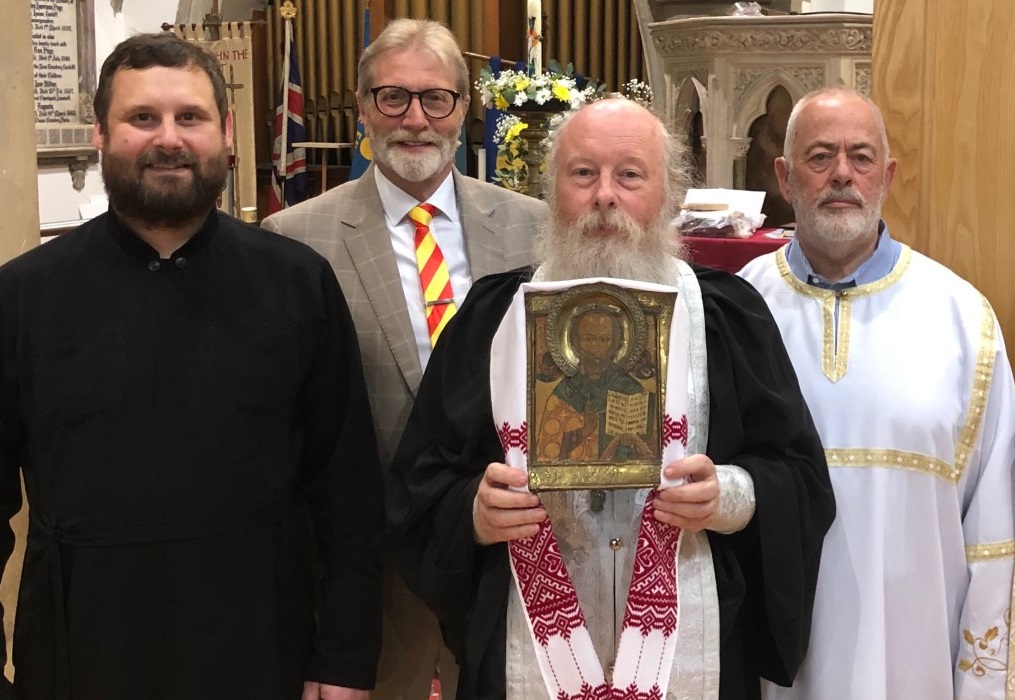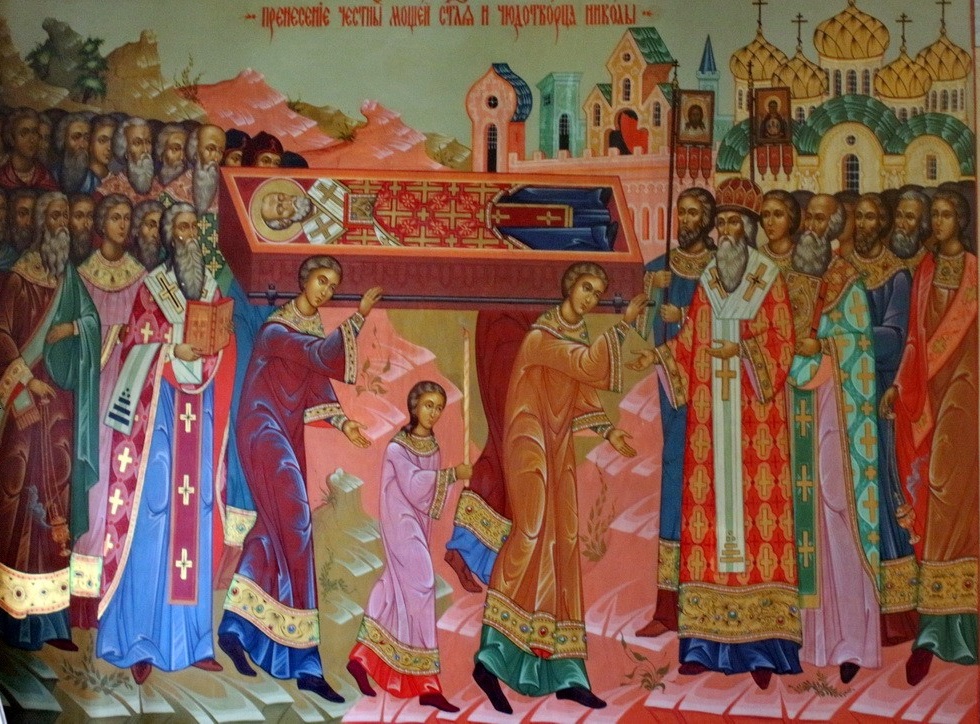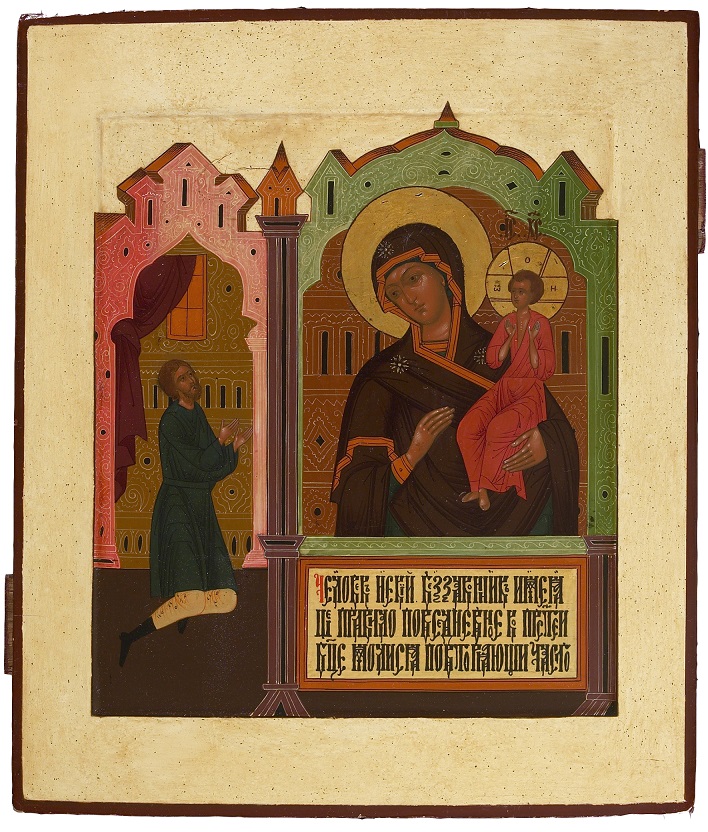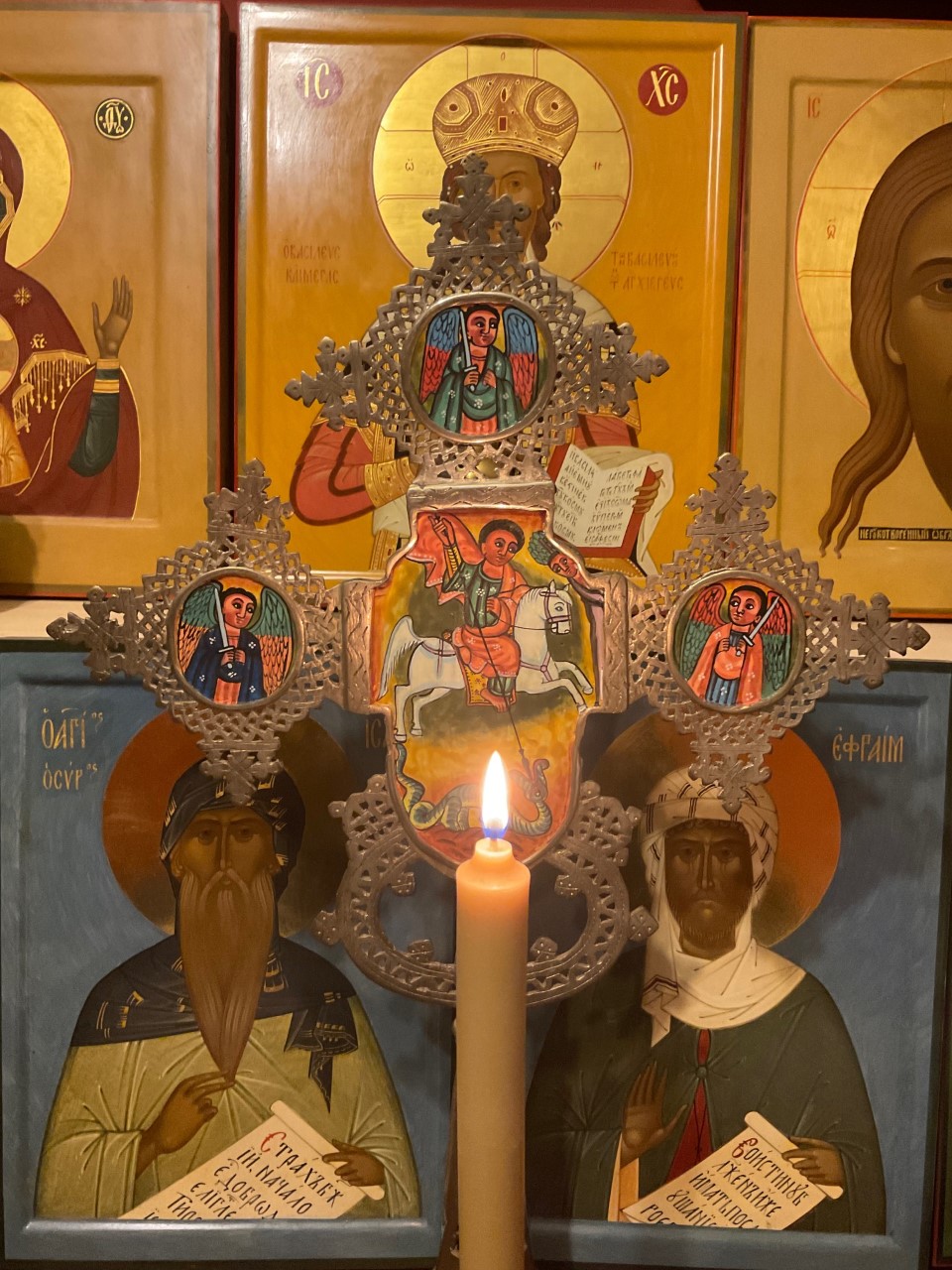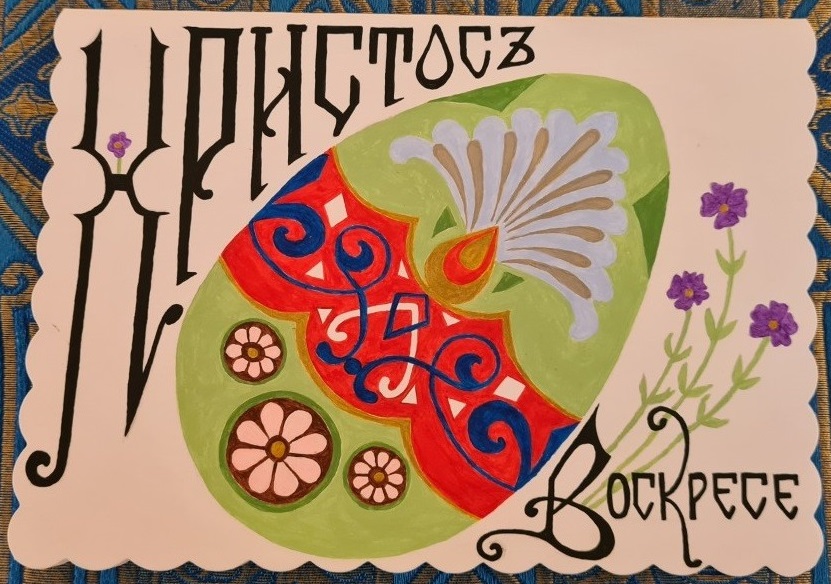Dear brothers and sisters – on this day on which we celebrate the Meeting of the Vladimir Icon, we also celebrate the Holy Equals to the Apostles Constantine and Helena.
Though we have a lack of Constantine’s, we greet our sisters baptised in honour of the Holy Empress Helena, congratulating them, asking God’s blessing and praying that he will preserve them for many years!
Многая и Благая лѣта!
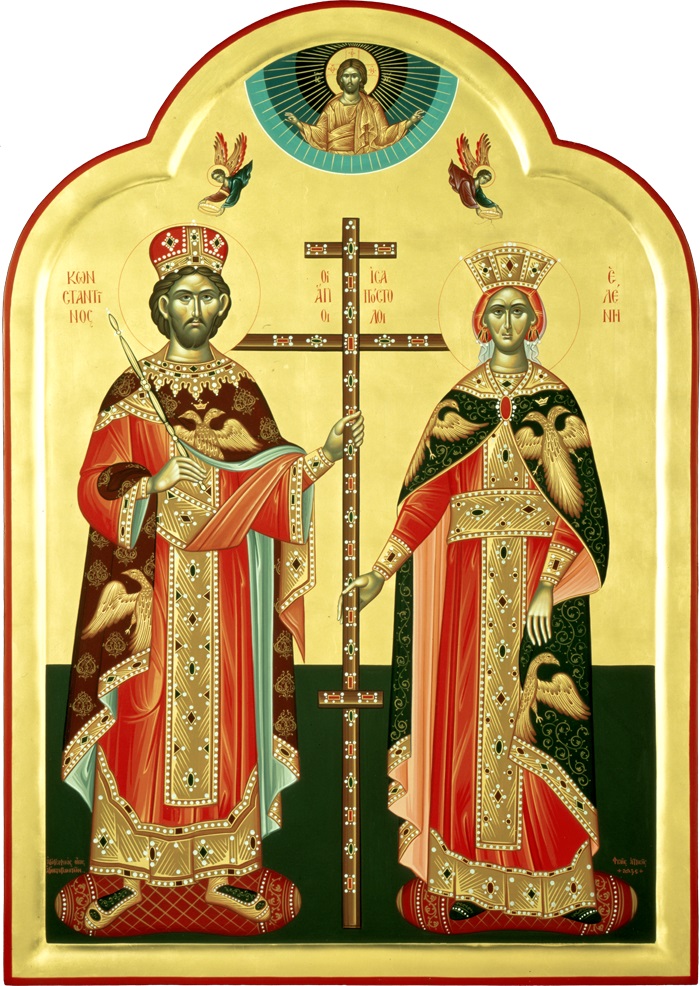
Canon of the saints, Tone VIII.
Ode I, Irmos: Having passed through the water as upon dry land, * and having escaped the malice of the Egyptians, * the Israelites cried aloud: * Unto our God and Redeemer let us sing.
Holy Equals to the Apostles, Constantine and Helena, pray to God for us.
O Thou Who alone art the King of heaven, through the entreaties of Thy favoured ones, free Thou my lowly soul from sin, which now reigneth within me.
Holy Equals to the Apostles, Constantine and Helena, pray to God for us.
As one who loved the kingdom on high, O blessed Constantine, believing with a pure mind, thou didst worship the King and Master of all.
Glory be to the Father and to the Son, and to the Holy Spirit.
Illumined with divine light, O divinely wise Helena, thou didst truly forsake the darkness of ignorance and most sincerely enslave thyself to the King of the ages.
Now and ever and unto the ages of ages. Amen.
O Lady, thou portal of the divine East, open unto me the door of repentance, and by thine intercession deliver me from the gates of deadly sin.
Ode III, Irmos: O Lord, Creator of the vault of Heaven * and Builder of the Church, * do Thou strengthen me in Thy love, O Summit of desire, * O Support of the faithful, * O only Lover of mankind.
Holy Equals to the Apostles, Constantine and Helena, pray to God for us.
Thou didst strive to receive heavenly rewards; wherefore, O divinely wise father, thou didst follow Him Who called thee, forsaking the darkness of the falsehood bequeathed to thee, and didst become a luminary through the divine Spirit.
Holy Equals to the Apostles, Constantine and Helena, pray to God for us.
Having cleaved unto Christ and set all thy hope on Him, O most honoured one, thou didst attain unto His sacred places, wherein the Supremely good One, having become incarnate, endured His most pure sufferings.
Glory be to the Father and to the Son, and to the Holy Spirit.
Burning with divine desire, O divinely blessed one, thou didst uncover the precious Cross, the weapon of salvation, the insuperable victory, the hope of Christians, which had been hidden in malice.
Now and ever and unto the ages of ages. Amen.
Having fallen away from my sacred citizenship, O most pure one, I have become like a beast and am wholly condemned. O thou who hast given birth to the Judge, deliver and save me from all condemnation.
Lord, have mercy. Lord, have mercy. Lord, have mercy.
Sessional Hymn of the saints, in Tone VIII: Spec. Mel.: “Of the Wisdom …”: Having stretched forth thy senses toward heaven and acquired the beauty of the stars, thou wast taught by them the mysteries of the Lord of all; and the weapon of the Cross shone forth in their midst, signifying that in which thou shouldest conquer and achieve dominion. Wherefore, opening the eyes of thy soul, thou didst read the writings and learn about the image. O most honored Constantine, entreat Christ God, that He grant remission of sins unto those who celebrate thy holy memory with love. (Twice)
Glory be to the Father and to the Son, and to the Holy Spirit; now and ever and unto the ages of ages. Amen.
Theotokion, Tone VIII: Having conceived the Wisdom and Word in thy womb without being consumed, O Mother of God, thou hast given birth for the world unto the Nourisher of all and Fashioner of creation; and thou didst bear in thine arms Him Who holdeth all things. Wherefore, I beseech thee, O all-holy Virgin, and glorify thee with faith: May I be delivered from transgressions, and, on the day of judgment when I shall stand before the face of my Creator, O pure Virgin Sovereign Lady, grant me thine aid; for thou canst do all things whatsoever thou dost will, O thou who art all-hymned.
Ode IV, Irmos: O Lord, I have heard the mystery of Thy dispensation; * I have considered Thy works, * and I have glorified Thy Divinity.
Holy Equals to the Apostles, Constantine and Helena, pray to God for us.
Christ the Lord pursued thee from heaven, as He had Paul of old, O Constantine, teaching thee to worship Him as the only King.
Holy Equals to the Apostles, Constantine and Helena, pray to God for us.
With a most radiant sign of stars, O blessed one, Christ the Sun illumined thee, showing thee to be a luminary for the darkened.
Glory be to the Father and to the Son, and to the Holy Spirit.
O blessed one, thou wast God-loving in nature and right wondrous in thy divine works; wherefore, we glorify thee with faith.
Now and ever and unto the ages of ages. Amen.
O Ever-virgin who hast given birth to the Sun of righteousness, illumine my soul, which hath been darkened by sins.
Ode V, Irmos: Rising early we cry to Thee, O Lord; * save us, for Thou art our God, * and we know none other besides Thee.
Holy Equals to the Apostles, Constantine and Helena, pray to God for us.
Having risen at dawn unto the never-waning Sun and Master, O divinely wise emperor, thou wast filled with light.
Holy Equals to the Apostles, Constantine and Helena, pray to God for us.
Wearing love and perfect loving-kindness like a robe of royal purple, thou hast now made thine abode in the kingdom on high.
Glory be to the Father and to the Son, and to the Holy Spirit.
O Helena, thou hast joined the choirs of the incorporeal ones, having pleased God by thy virtuous works.
Now and ever and unto the ages of ages. Amen.
Cleanse thou my soul, which hath been defiled by carnal pleasures through the treachery of the serpent, O Virgin.
Ode VI, Irmos: I will pour out my prayer unto the Lord, * and to Him will I proclaim my grief; * for my soul is filled with evils, * and my life unto Hades hath drawn nigh, * and like Jonah I pray unto Thee: * Raise me up from corruption, O God. Most gloriously didst thou assemble the divine choir of the God-bearing fathers,
Holy Equals to the Apostles, Constantine and Helena, pray to God for us.
O Constantine, and through them make steadfast the storm-tossed hearts of all, that they might glorify the Word as equal in honor and co-enthroned with the One Who begat Him.
Holy Equals to the Apostles, Constantine and Helena, pray to God for us.
Having believed on the living Lord Who giveth life unto all, O Helena, thou didst spurn the abominable worship of vain idols and joyously received the kingdom of heaven.
Glory be to the Father and to the Son, and to the Holy Spirit.
Guided by Thy hand, O Word, through Thee the sovereigns thrust aside the most profound darkness of ignorance and the tempest of cruel godlessness, and arrived, rejoicing, at the calm havens of piety.
Now and ever and unto the ages of ages. Amen.
Heal thou my heart, which hath grown incurably sick and hath been grievously wounded by the sting of the evil one, O Maiden, and by thine entreaties grant healing unto me, and save me who trust in thee, O most pure one.
Lord, have mercy. Lord, have mercy. Lord, have mercy.
Glory be to the Father and to the Son, and to the Holy Spirit; now and ever and unto the ages of ages. Amen.
Kontakion, Tone III: Spec. Mel.: “Today the Virgin …”: Today Constantine and his mother Helena * have revealed the Cross, the most precious Tree, * which putteth to shame all the Jews * and is the weapon of faithful kings against the adversary. ** For our sake the great standard hath appeared, terrible in battle.
Ikos: Let us honor Constantine, and Helena his mother; for, hearing the words of David, they recognized the three parts of the Cross in the cedar, the pine and the cypress, upon which the suffering of the Savior was accomplished. And having found it, in preparation to display it before the people, they set it before all the Jews, hidden because of their hatred and jealousy; revealing it to be the great justification. Wherefore, they have been revealed to all as victors, bearing the invincible trophy, the great standard, terrible in battle.
Ode VII, Irmos: The Hebrew children in the furnace * boldly trampled upon the flames, * changing the fire into dew, they cried aloud: * ‘Blessed art Thou, O Lord our God, throughout the ages’.
Holy Equals to the Apostles, Constantine and Helena, pray to God for us.
Keeping Thy precepts, Constantine submitted to Thy law. Wherefore, he hath cast down hordes of the iniquitous, crying out to Thee: Blessed art Thou, O Lord God!
Holy Equals to the Apostles, Constantine and Helena, pray to God for us.
The Tree which hath drawn all from the pit of destruction, O right wondrous one, and which was buried out of malice, thou didst disclose unto us, burying the most pernicious demons forever.
Glory be to the Father and to the Son, and to the Holy Spirit.
By godly works thou didst make thy heart a temple of God, O Helena, and didst likewise build sacred churches for Him, where for our sake He endured His most pure sufferings for our sake.
Now and ever and unto the ages of ages. Amen.
Willingly committing sins, and enslaved by unseemly habits, I flee now to thy tender compassion. O most holy Sovereign Lady, save me who am in despair!
Ode VIII, Irmos: In his wrath the Chaldean Tyrant made the furnace blaze, * with heat fanned sevenfold for the servants of God; * but when he perceived that they had been saved by a greater power * he cried aloud to the Creator and Redeemer, * ‘O ye youths bless, O ye priests praise, * O ye people, supremely exalt Him throughout all ages’.
Holy Equals to the Apostles, Constantine and Helena, pray to God for us.
Arrayed in loving-kindness as in a robe and in goodly meekness as in cloak, O glorious one, thou wast adorned with a mind perfect in the virtues as with a crown; and having been translated from earth to the kingdom on high, thou dost cry aloud: O ye priests bless; O ye people supremely exalt Christ throughout all ages!
Holy Equals to the Apostles, Constantine and Helena, pray to God for us.
Beholding thee rejoicing with thy divinely wise son, in the kingdom of God, O glorious Helena, we magnify Christ Who hath shown us your honoured festival, which illumineth us more brightly than the rays of the sun, wherefore we chant with faith: O ye people supremely exalt Christ throughout all ages!
Glory be to the Father and to the Son, and to the Holy Spirit.
Wondrous is thy desire and godly thy character, O glorious Helena, thou boast of women! For having attained unto the places where the precious sufferings took place, thou didst adorn them with all-beauteous temples of the Master of all, crying: O ye people supremely exalt Christ throughout all ages!
Now and ever and unto the ages of ages. Amen.
O Theotokos, enlighten the eyes of my soul, which have been blinded by many crimes; grant peace to my mind and heart, which have been vexed by multifarious pleasures, I pray, and save me who cry: O ye priests bless; ye people supremely exalt the pure one throughout all ages!
Ode IX, Irmos: Heaven was stricken with awe, * and the ends of the earth were filled with amazement, * for God hath appeared in the flesh, * and thy womb was rendered more spacious than the heavens. * Wherefore, the ranks of men and of angels * magnify thee as the Theotokos.
Holy Equals to the Apostles, Constantine and Helena, pray to God for us.
The tomb wherein thy sacred and precious body doth lie, O Constantine, doth ever pour forth the radiance of divine healings upon those whoever approach it in purity, driving away the darkness of divers passions and illumining those who praise thee with never-waning light.
Holy Equals to the Apostles, Constantine and Helena, pray to God for us.
Having finished thy life in holiness, thou hast now made thine abode with the saints, full of sanctity and enlightenment. Wherefore, ever pouring forth rivers of healings, thou dost burn up our sufferings, giving drink to our souls, O blessed Helena.
Glory be to the Father and to the Son, and to the Holy Spirit.
O unoriginate and immortal King, Thou hast vouchsafed Thy heavenly kingdom to the holy Helena and the great Constantine, whom of old thou didst grant to reign piously on earth, and who loved Thee in purity, O Lord. By their supplications have pity on us all.
Now and ever and unto the ages of ages. Amen.
Having conceived, thou hast given birth to the King and Creator of all, O Virgin. And, lo! as a Queen thou standest forth now at His right hand. Wherefore, I beseech thee: at the hour of judgment deliver me from the left side, and number me with the sheep on the right.
Troparion, Tone VIII: Beholding the image of Thy Cross in the sky, * and like Paul receiving a call not from men, * Thine apostle among kings placed the imperial city in Thy hands, O Lord. * Do Thou ever preserve it in peace, ** through the supplications of the Theotokos, O Thou Who alone art the Lover of mankind.

